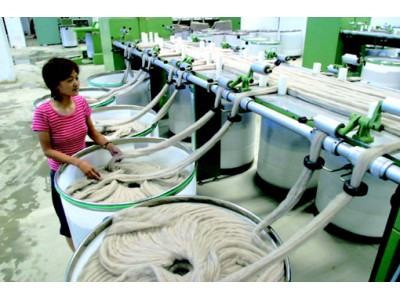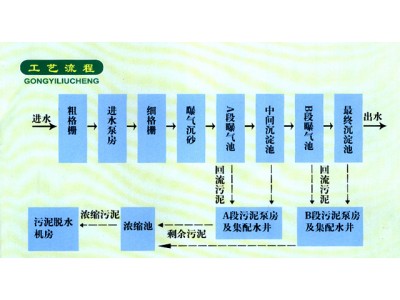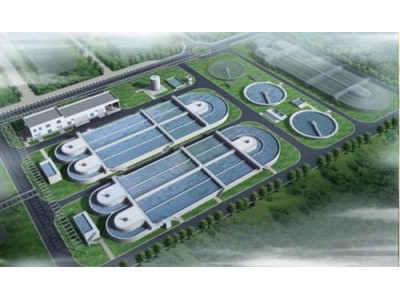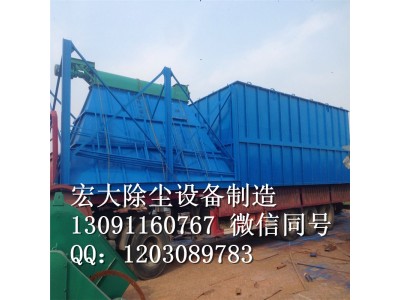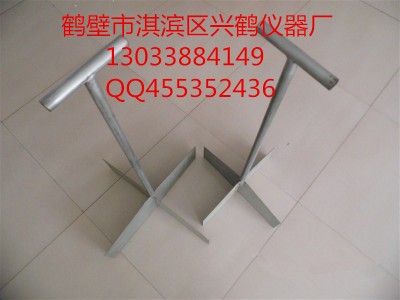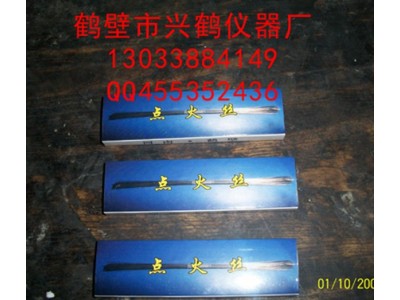1. INTRODUCTION
The concept of bioreactor landfills has certainly gained a lot of attention in the past decade. Its advantages over the conventional “dry tomb” landfills are well demonstrated by many laboratory tests and pilot-scale studies. However, there is still more full-scale research work required before we can truly translate this concept into everyday practical operations. Aiming to bridge this gap, an experiment has been conducted in the Lyndhurst Landfill, near
(a) the experimental implementation of a full-scale bioreactor landfill cell (stimulated by leachate recirculation) to quantify the stabilisation of waste in terms of leachate quality, gas composition and production, waste temperature, and landfill settlement;
(b) the evaluation of leachate recirculation system performance and moisture flow mechanism in municipal solid waste;
(c) the study of water balance in the full-scale experimental cell to identify the significance of various water components for the purpose of leachate recirculation management; and
(d) the development of an in-situ moisture measurement technique to be used in municipal solid waste for the hydrological investigations in (b) and (c) above.
As pointed out in a literature review (Yuen et al., 1994), the research committed to hydrological aspects of bioreactor landfills has been very limited compared with the work that has been done in biodegradation enhancement. The hydrological component of this study aimed to address this shortcoming.
In a detailed description of the full-scale experimental cell, Yuen (1999) described the cell size, waste composition and moisture content analyse, density and porosity of waste, daily and interim cover material, containment system, leachate collection and gas extraction system, leachate recirculation system, instrumentation and monitoring program, and leachate recirculation strategy.
This paper presents a brief summary of the findings from the five-year study. Detailed results of the investigation are not presented here; they are to be referred to Yuen (1999). The current state of bioreactor landfill technology is also discussed. Finally, the problems that are associated with full-scale operations and future research focus are identified.
2. SUMMARY OF FINDINGS
Due to the complex and heterogeneous nature of MSW landfills, the study identified that there is no ideal method available for the indirect measurement of their in-situ moisture content. Nevertheless, the investigation concluded that the use of a neutron probe combined with in-situ access tubes offers the best available indirect/ non-destructive method (Yuen et al., 1997). By recognising certain limitations, the method was successfully applied in the study to monitor seasonal moisture change and moisture variation caused by leachate injection.
2.2 Water Balance Study
The water balance analysis was conducted for two separate periods, namely the pre-capping phase and the post-capping phase.
The pre-capping water balance covered a 25-month filling period. The results indicated that around 20% of the rainfall evaporated, 54% was absorbed in the waste mass, and the remaining 26% percolated through the waste and reached the base. The percolation occurred mainly during the winter months when evaporation was least efficient. Surface runoff from the open cell was estimated to be negligible. The water balance also revealed that the overall volumetric moisture content increased from an estimated 20% (as-placed) to 27% (prior to final-capping).
The post-capping water balance indicated that a relatively high percentage of rainfall was evapotranspirated from the final cap, 67% in 1996 and 84% in 1997 (total rainfall was
The experimental cell was divided into two sections: a test section where leachate recirculation was practised, and a control section where the waste was kept dry. The injection of 2.5 million litres of leachate into the test section of the experimental cell increased the overall volumetric moisture content of that section from the as-capped 27% to 31%. In contrast, due to the limited infiltration, the moisture content of the control section remained at around 27% up to the end of the study period in December 1997.
The in-situ field capacity of the waste was calculated to be 34%. This figure was obtained by conducting a water balance to determine the amount of water that was drained from a saturated zone at the base of the control section. However, in the case of the test section, where leachate recirculation was practised and channelling flow was evident, the “effective” field capacity (i.e. the volume of water absorbed by the waste before free drainage occurs) would be somewhat lower than this figure. This was simply due to the presence of dead zones that could not absorb the injected leachate.
2.3 Moisture Flow Mechanism and Recirculation System Performance
The investigation, composed of numerical modelling and field measurements, indicated that moisture transport mechanism through MSW in a full-scale landfill is extremely complex. It is found that the classical theory based on saturated/ unsaturated flow through a homogeneous porous media is not applicable in predicting moisture distribution patterns introduced by leachate injection, although the theory may still be acceptable in predicting bulk leachate flow rates if calibrated spatially-lumped parameters are used.
There were five moisture content monitoring access tubes (refer Section 2.1) employed in a leachate recirculation trial to monitor moisture changes in the proximity of a sub-surface infiltration trench and a deep vertical injection well. Given the extreme heterogeneity of the flow medium, the five access tubes were not adequate in terms of getting enough data for the mapping of moisture content isoclines around the injection devices. Nevertheless, the results at least managed to reflect the inapplicability of the numerical predictive model based on saturated/ unsaturated flow through a homogeneous porous media. The results also indicated that the performance of both the sub-surface trench and vertical well, which are the common devices employed in many recirculation landfills, was far from ideal in achieving a uniform leachate distribution. Consequently, there is little doubt that significant channelling and dead zones existed.
2.4 Monitoring of Stabilisation Indicators
Leachate composition, production of landfill gas, landfill settlement, and in-situ waste temperature have been used as indicators to gauge the biodegradation development of the experimental cell with an aim of differentiating the control and test sections. Due to the extremely heterogeneous nature of the full-scale landfill, significant spatial variations were evident even within the control or test section itself. This led to a rather unexpected but still logical outcome.
In the test section, the above four indicators consistently revealed that the waste mass at one monitoring location had been subjected to enhanced biodegradation. However, the biodegradation at a second monitoring location was relatively subdued in terms of methane production and in-situ temperature. The better performance at the first monitoring location undoubtedly benefited from a positive leachate recirculation. The rather unexpected finding obtained at the second location was explained by a retardation of methanogenesis due to excessive air ingress; this was evident from a gas well leakage in its proximity.
For the control section, despite the intended dry cell approach, the results of all indicators suggested that methanogenesis was reasonably active in the waste mass. This was again rather unexpected. However, the reasoning behind this was not hard to follow if the moisture content of the control section was taken into consideration. According to the hydrological investigation (Section 2.2), the control section was only 4% (v/v) drier than the test section. Indeed, the control section was not really that dry with its moisture content at 27%. This relatively high “dry cell” moisture content was the result of a considerable amount of percolation occurring during the 25-month filling period (refer Section 2.2). This explains the reasonable extent of methanogenic activities in the control section.
While the outcome of the monitoring was not quite as predicted, it does provide some important findings:
· Having considered all the logical explanations for the unexpected results, it could be concluded that a better biodegradation has been achieved in some parts of the test section. The biodegradation enhancement did not occur in the entire test section. This implies that it is essential to have sufficient sampling points installed in all full-scale experiments in order to delineate also the extent of spatial variation.
· Moisture as a critical factor in promoting biodegradation was clearly demonstrated by the methanogenic activities observed in the not-so-dry control section. This finding helps to justify the option of pre-wetting waste prior to final capping, either artificially or naturally as in this case.
· Gas monitoring results suggest that the interpretation of gas production rates and CH4/CO2 ratios is dependent on the type of gas collection system (i.e. an active or passive system) being used. This factor has been rarely addressed in the literature.
· The mixing of a high proportion of non-hazardous industrial/commercial waste in the experimental cell appears to be beneficial, as it provided a good natural pH buffer.
· It was observed that methanogenic conditions had developed early in the basal drainage layer promoted by the inert nature of the gravel. This finding follows similar observations of other full-scale studies (e.g. Knox, 1997). This implies that leachate collected from the sumps cannot be taken to represent the waste mass.
· Routine groundwater monitoring was being conducted throughout the study period. There was no significant change observed in the groundwater quality.
3. CONCLUSIONS OF THE STUDY
This study resulted in many findings; some were predictable and some were not. Many of the findings, however, lead to one common important conclusion - a full-scale landfill is extremely heterogeneous, a feature that tends to be misrepresented by small-scale experiments. It is for this very reason that small-scale results in many cases could not be reproduced in full-scale landfills. This important point is clearly demonstrated by the study both in the hydrological investigation and in the stabilisation indicator monitoring. Small-scale investigations undoubtedly should continue to form the basis of fundamental landfill research. However, their results should be interpreted with caution and their use should not be taken as a full substitute for full-scale experiments. This study also managed to identify many operational problems associated with full-scale bioreactors; these included moisture monitoring techniques, recirculation methods, in-situ leachate storage and gas collection systems.
Extensive instrumentation was installed in the experimental cell. The instrumentation has generally been successful. Most importantly, an indirect non-destructive MSW moisture measurement technique (Section 2.1) has been introduced. All the instrumentation employed is well documented (Yuen, 1999). It is believed that the documentation would serve to provide some useful experience and guidelines for similar future full-scale experiments.
The hydrological component of this study certainly helps to provide a better understanding of landfill hydrology. The water balance analysis has identified the significance of various water components. This information is important and useful in terms of leachate management for both dry and wet landfills, especially for those located in a climatic region similar to this study. For example, the study indicated that a prolonged filling period allows substantial wetting of the uncapped cell. In contrast, with the compacted clay final cap in place, infiltration reduced to insignificant levels due to very effective evapotranspiration. These findings have implications for both dry and wet cell designs. The experiment also showed that in this case leachate could be successfully stored in-situ without jeopardising groundwater quality.
The numeral modelling and field measurements of the leachate recirculation trial demonstrated the shortcomings of both sub-surface trench and vertical well injection methods. This finding is significant in terms of exposing the inadequacy of the common recirculation devices and identifying the urgent need for improvement to achieve a better moisture distribution.
Contradicting the proposals from many studies, this study demonstrated that the classical theory based on saturated/ unsaturated flow through a homogeneous porous medium can at best be used to predict bulk leachate flow but is not useful in predicting moisture patterns. Numerical simulation for moisture transport through MSW appears to be extremely complex and there is certainly a need to look into alternative modelling approaches.
This study helps to explain to some extent the rather confusing monitoring results that have been observed in other full-scale studies. In this experiment, it was evident that significant spatial variations occurred even within the control or test section itself. The implication is that the use of limited sampling points in full-scale experiments is likely to be insufficient in delineating the extremely heterogeneous nature of landfills.
In common with many other studies, this project also has shortcomings. The original aim of the control section was to provide a “dry” landfill to measure against the performance of the test section. However, in this case due to significant wetting of the waste during the prolonged filling period, the control section was not created with an ideally dry condition. Subsequently, the experiment did not provide an ideal comparison between the dry and wet sections.
The research on bioreactor landfills, especially regarding the change in landfill behaviour corresponding to various stages of development, demands a long-term research commitment. Up to date, the study has covered only a relatively short period. This study should be viewed as the initial part of a potentially long-term on-going project.
4. THE WAY AHEAD FOR BIOREACTOR LANDFILLS
While the concept of bioreactor landfills definitely offers many advantages, there are difficulties yet to be resolved prior to its transformation into everyday practical operations. According to the findings of this study, undoubtedly the most urgent need is to improve the current technique of leachate recirculation. Given the heterogenous nature of landfills, to achieve a uniform moisture distribution throughout the waste mass would be practically difficult. Nevertheless, this is the area in which future research should be directed.
Until the problems associated with channelling and dead zones can be eliminated, the idea of a total waste stabilisation and subsequent landfill re-mining to recycle landfill space will not be possible. The same applies to the high rate flushing bioreactors concept (Walker et al., 1997).
Nevertheless, it is highly likely that improvement can be made in reducing rather than eliminating channelling and dead zones. In this case, the application of landfill bioreactors to achieve the benefits of landfill gas enhancement, partial leachate treatment, in-situ leachate storage, accelerated landfill settlement, and partial waste stabilisation will be a practical reality.
The recent trend in solid waste management, especially in
Thus a sensible integrated waste management system would possibly comprise one of the following options:
· To dispose MSW into landfills as it is collected. These landfills will be composed of both decomposable and inert wastes and can be treated as bioreactors. Under this option, the landfills will ultimately be used as permanent storage, but the waste will be stabilised in a relatively short time to reduce the long-term environmental risk.
· To sort MSW and dispose only quality organic waste in landfills. Under this option, the landfills are to be treated as batched anaerobic bioreactors. The end product will be good quality anaerobic compost and the landfills will be mined to recycle disposable space.
· To divert all decomposable waste from landfills for recycling/ composting and dispose only inert waste that cannot be recycled. Under this option, the landfills will serve as permanent storage but with negligible long-term environmental risk.
Whichever option is to be used, the integrated waste management strategy has to be considered as a whole to determine the best combination to suit a particular situation.
4. RECOMMENDATIONS FOR FUTURE STUDIES
Future studies of bioreactor landfills should be focused on the following areas:
· The improvement of leachate recirculation systems to distribute moisture uniformly throughout the waste mass;
· The long-term performance of recirculation devices taking into account the potential reduction in efficiency caused by bio-fouling and siltation (which has not been addressed in this study);
· Alternative enhancement approaches such as waste shredding, waste pre-wetting, and use of permeable alternative daily cover;
· Alternative numerical moisture transport models such as the recently proposed two-domain approach (e.g. Zeiss, 1997 and Bendz et al., 1997) for moisture distribution prediction;
· Investigation on the extent of channelling and dead zones due to heterogeneity by employing sufficient moisture monitoring access tubes to collect adequate data for the mapping of moisture content isoclines; and
· The implementation of more full-scale bioreactor experiments, as biodegradation influencing factors such as waste composition, climate, and hydrological conditions can vary substantially from region to region.
ACKNOWLEDGEMENT
The authors gratefully acknowledge the enthusiastic commitment of
REFERENCES
Bendz, D., Singh, V. P., & Berndtsson, R. (1997). The Flow Regime in Landfills - Implications for Modelling. Paper presented at the Sardinia 97, Sixth International Landfill Symposium, October 1997,
Knox, K. (1997). A Review of the Brogborough and Landfill 2000 Test Cells Monitoring Data. Final Report for the Environment Agency, Report No. CMW 145/97. (Research Contract No.EPG
Walker, A. N., Beaven, R. P., & Powrie, W. (1997). Overcoming Problems in the Development of a High Rate
Yuen, S. T. S., Styles, J. R., & McMahon, T. A. (1994). Process-Based Landfills Achieved By Leachate Recirculation - A Critical Review and Summary (Centre for Environmental Applied Hydrology Report),
Yuen S.T.S., Wang Q.J., Styles J.R., McMahon T.A. (1997), Using Neutron probe technique for Moisture Monitoring in Landfills, the Sixth International Landfill Symposium, Sardinia' 97, Italy, October 1997, Vol. 4, P.315-324.
Yuen, S. T. S. (1999). Bioreactor Landfills Promoted By Leachate Recirculation - A Full-Scale Study. Thesis Submitted for the Degree of Doctor of Philosophy, Department of Civil and Environmental Engineering,
Zeiss, C., & Major, W. (1993). Moisture Flow through Municipal Solid Waste: Pattern and Characteristics. Journal of Environmental Systems, 22(3), 211-232.



